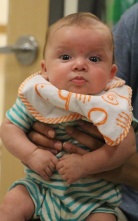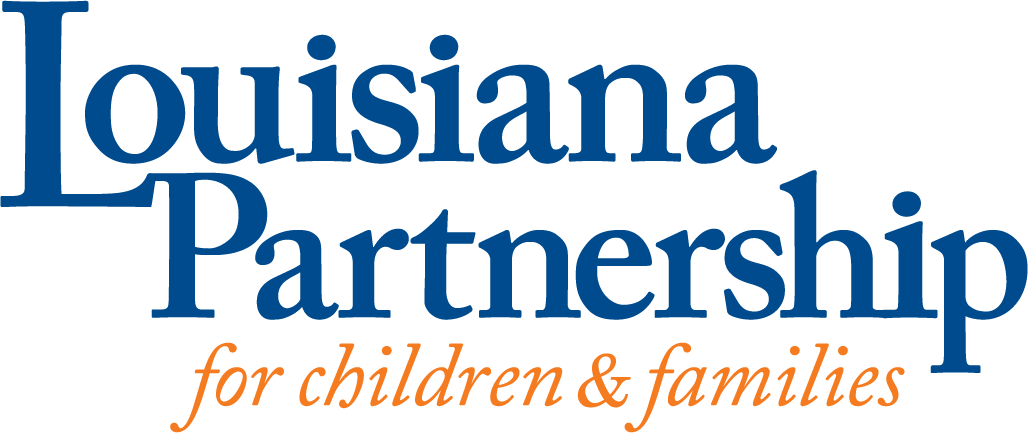
Photo: Alyssa Haywoode for Strategies for Children
Research on how infants develop language skills is providing crucial insights on how language-rich environments benefit babies. And helping babies develop language skill is a crucial early step in helping them grow into proficient third-grade readers who can tackle the challenges of school and careers.
Two new studies that describe some of the fine points of boosting infants’ and toddlers’ language come from the University of Iowa, Indiana University, and the University of Missouri.
The research from the University of Iowa encourages parents to try to figure out what their babbling babies might be saying because doing so could help babies learn to communicate sooner.
“Pay attention, mom and dad, especially when your infant looks at you and babbles,” a university article explains.
“Parents may not understand a baby’s prattling, but by listening and responding, they let their infants know they can communicate which leads to children forming complex sounds and using language more quickly.”
This advice is based on a new study undefined “Maternal Responsiveness and the Development of Directed Vocalizing in Social Interactions” undefined conducted by researchers at Iowa and at Indiana University. The study, which was published in the journal Infancy, found that “how parents respond to their children’s babbling can actually shape the way infants communicate and use vocalizations.”
“It’s not that we found responsiveness matters,” study author Julie Gros-Louis, an assistant psychology professor at Iowa, says in the article. “It’s how a mother responds that matters.”
To conduct the study, researchers “observed the interactions between 12 mothers and their 8-month-old infants during free play twice a month for 30 minutes over a six-month period. They noted how the mothers responded to their child’s positive vocalizations.”
The article explains: “What researchers discovered is infants whose mothers responded to what they thought their babies were saying, showed an increase in developmentally advanced, consonant-vowel vocalizations, which means the babbling has become sophisticated enough to sound more like words. The babies also began directing more of their babbling over time toward their mothers.”
“On the other hand, infants whose mothers did not try as much to understand them and instead directed their infants’ attention at times to something else did not show the same rate of growth in their language and communication skills.”
“Gros-Louis says the difference was mothers who engaged with their infants when they babbled let their children know they could communicate. Consequently, those babies turned more often to their mothers and babbled.”
Gros-Louis explains: “The infants were using vocalizations in a communicative way, in a sense, because they learned they are communicative.”
* * *
Researchers at the University of Missouri found that “toddlers learn words differently as they age, and a limit exists as to how many words they can learn each day,” according to a university article. The study is called “The Type, but Not the Amount, of Information Available Influences Toddlers’ Fast Mapping and Retention of New Words.”
These findings could help parents support their child’s vocabulary development and help them “assist speech-language professionals in developing and refining interventions to help children with language delays.”
Judith Goodman explains: “We found that babies’ abilities to accurately guess the meaning of new words increases between 18 and 30 months of age; and by 24 to 36 months, toddlers are able to accurately guess the meanings of new words at a significantly higher level.”
“Interestingly, we observed that even from the time children mature from 18 to 30 months of age, the cues toddlers use to learn new words change.”
Goodman is an associate professor in Missouri’s School of Health Professions and chair of the Department of Communication Science and Disorders. The study was published in the American Journal of Speech-Language Pathology.
The research methodology: “researchers taught six new words to children, who ranged in age from 18 to 36 months, using three types of cues. The cues were presented alone or in pairs, and the researchers recorded the children’s ability to accurately guess what the words meant.”
Those cues ranged from social cues to inferring what one object was called, by knowing the name of another accompanying object. The article explains:
“‘When children were presented with a new word and asked to choose between an item for which they already had a name and an unfamiliar object, they appropriately assigned the new word to the unfamiliar object, and this ability improved as children aged,’ Goodman said. ‘The toddlers’ ability to infer a word’s meaning from linguistic context, such as figuring out that a ‘kiwi’ must be a food item when they hear, ‘Sammy eats the kiwi,’ also improved as the children aged. However, using social cues, such as eye gaze, became less effective as the children matured. By 36 months of age, children were less likely to assume a word referred to the particular object a speaker was looking at – looking at a kiwi when teaching the child the word ‘kiwi’ – than younger children were.’”
The article adds: “Children who are struggling with learning language may benefit from being presented with specific cues, Goodman said. Additionally, the research reinforces the importance of providing children with rich word-learning environments, in which toddlers are exposed to many words and are provided with a variety of cues to help them learn and remember those words and what they represent, Goodman said.”
Our graphic, “A Developing Reader’s Journey to Third Grade,” provides additional context for “ways adults can support children’s language and reading.”
Link to article.
